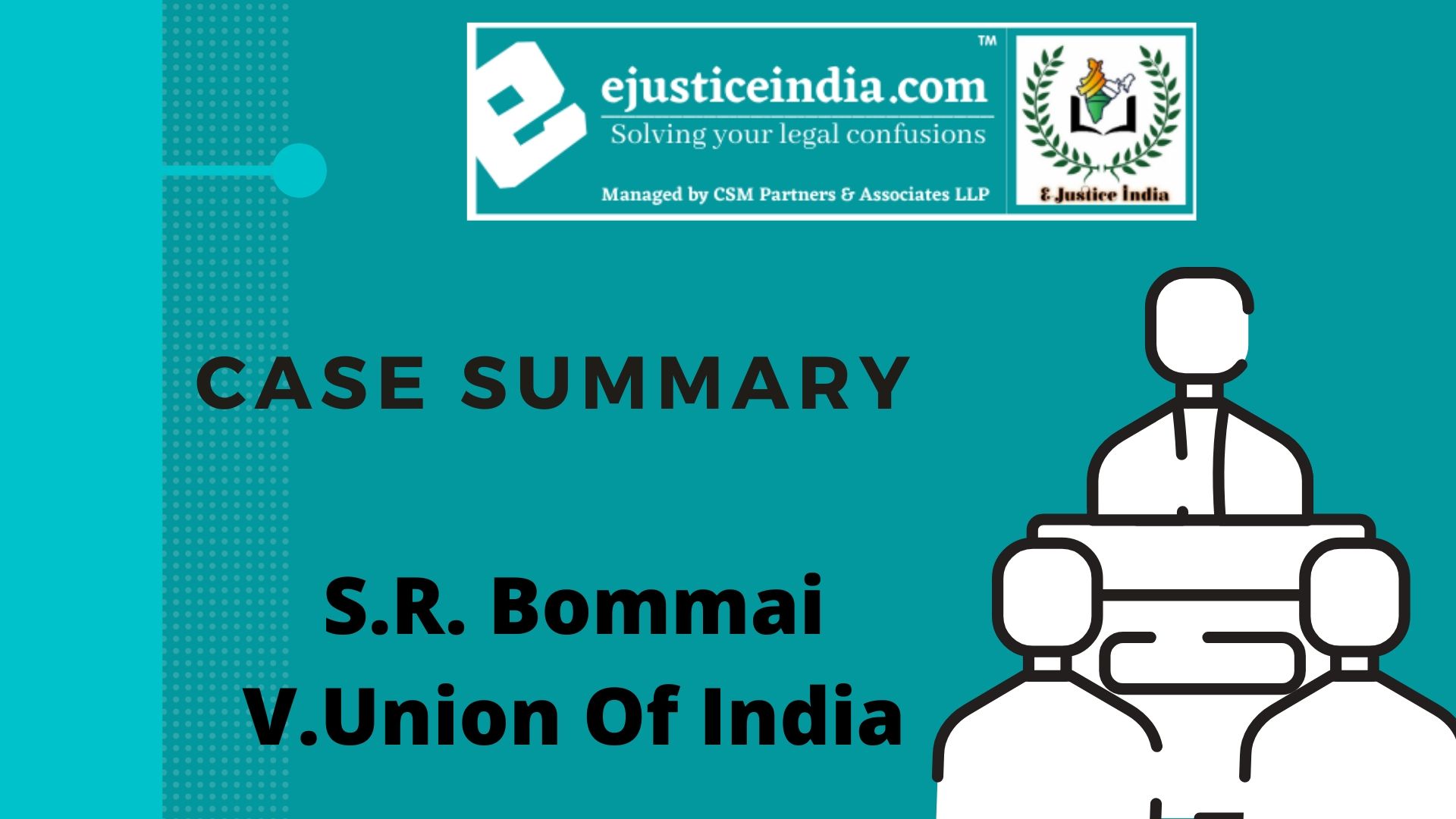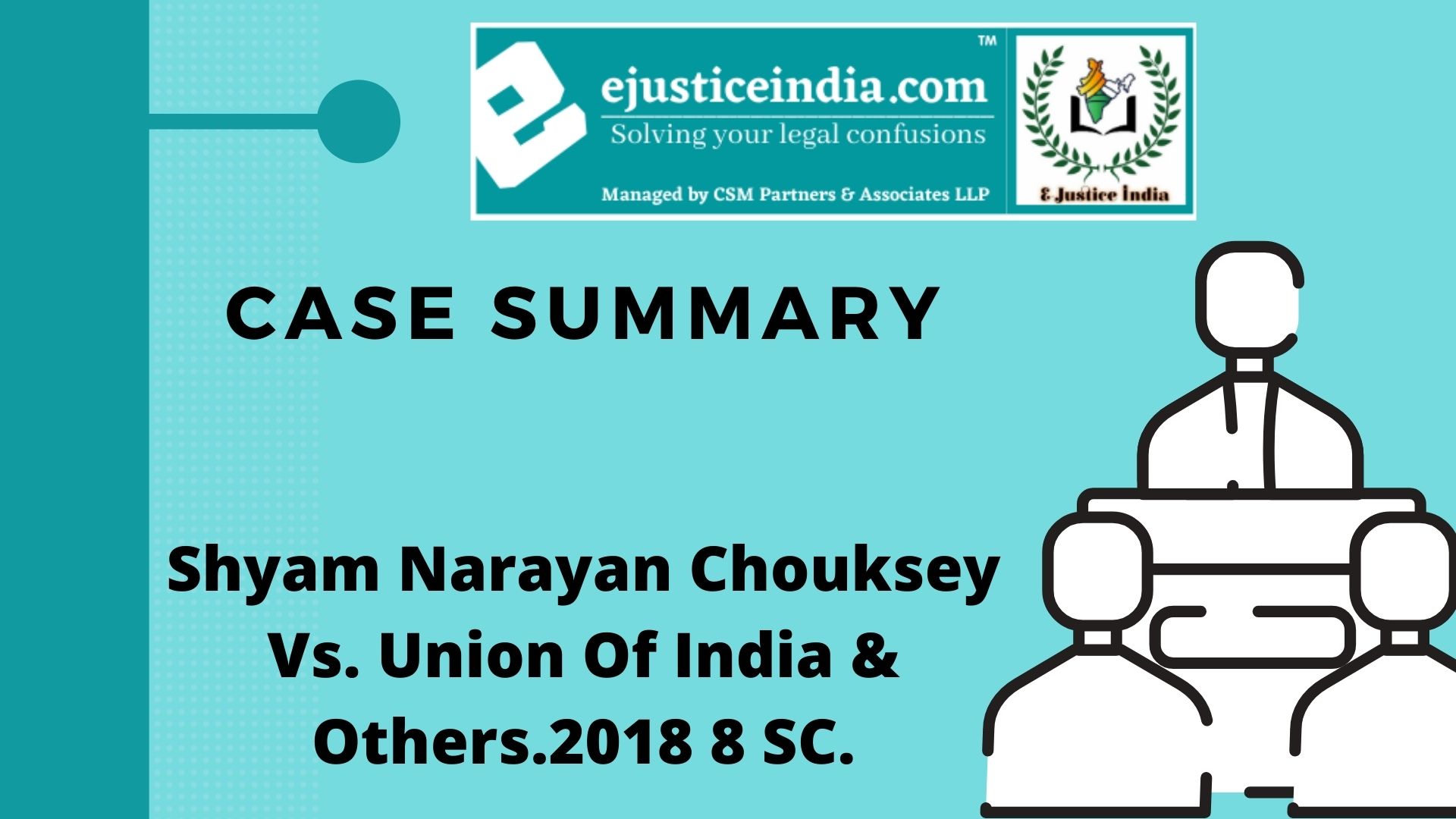BHIMA VS THE STATE OF MAHARASHTRA
Author: Aprajita Priyadarshni
EQUIVALENT CITATIONS
CRIMINAL APPEAL NO. 338 OF 1999
BENCH
Mr. S. S. Shinde
INTRODUCTION
In the present the accused has been convicted by the Trial Court for offences under Sec 363, 366 and 376 of the Indian Penal Code for falsely inducing a minor girl for marriage and taking her away from the legal guardianship of her parents.
The punishment that has been provided for kidnapping is mentioned under Sec 363 of the IPC while Sec 366 deals with the offence of kidnapping, abducting or inducing any woman with the intention of compelling her to marry or have a forced sexual relationship. The Sec 376 provides for the punishment of rape.
The major defense taken by the appellant in this case is that the girl willingly went away with her and that there had been no compulsion or force. The Court ruled that the consent of the minor in such cases of kidnapping held no value and was not a valid defence.
FACTS
This case arises out of an appeal by the guilty appellant Bhima Goroba Sontakke against whom Mr. Sudhakar Kishanrao Lohgaonkar had lodged a complaint with the Killari Police Station on 24-11-1997. Bhima along with his parents had been accused of having kidnapped Sudhakar’s eldest daughter Saraswati with the intent to perform her marriage with Bhima. It had been claimed by Saraswati’s father that she had been induced and enticed under the pretext of marriage while she was taken out of his legal guardianship. Saraswati was searched for everywhere but she was nowhere to be found.
When on 23-11-1997 the father came to know that his daughter Saraswati and Bhima have returned back to village, he lodged the said complaint against Bhima and his parents.
On the basis of the complaint, offences under S.363, 366, 367 to be read with S.34 of the IPC came to be registered against the accused. Upon investigation, Bhima and Saraswati were found at Bhima’s house and other accused were arrested. All the arrested pleaded guilty contending that the allegation against them all was vague. It was asserted that Saraswati’s parents wanted her to get married to Bhima but this could not be possible because of the legal proceedings initiated by Bhima’s wife and in order to harass the accused all these false accusations have been made by her father.
The evidence made by the prosecutrix stated that there had been a love affair between her and the accused but she had kept herself away from him ever since she discovered the fact that he had been married. On one incident, Ramabai, the neighbour of the accused had called her home where Bhima was already present. She gave her Rs. 300 and told her that she should marry Bhima because his wife could not conceive a child. She then locked them both inside where Bhima forced her into a sexual intercourse. A few days later she was again called by Ramabai who advised that they both should go away to Bhivandi for a few days.
On the testimonial evidence made by the prosecutrix as well as other prosecution witnesses, the Trial Court convicted the appellant accused for offence under S.366 and sentenced him to 4 years of rigorous imprisonment to which the current appeal has been made in the High Court of Judicature at Bombay.
ISSUES AND FACTS OF LAW
- Whether the evidence by the prosecutrix could be nullified owing to the mere absence of a radiological test to ascertain her age?
The said argument was discarded by the court on the ground that other than the radiological test, there has been enough evidence produced to prove the age of the prosecutrix to be true as stated by her. There has been an entry in the Grampanchayat register of Dapegaon by the Gramsevak about the birth of prosecutrix on 29-01-1982. Copy of the birth certificate issued by the Grampanchayat and the examination of the Gramsevak were relied upon. Also, the Medical Officer had stated that on clinical examination, the prosecutrix was found to be of 15-16years of age.
Thus, the mere statement of the Medical Officer that a radiological test was required to ascertain the age did not nullify the evidentiary value of the produced documents. Thus, it was proved beyond reasonable doubts that the prosecutrix was a minor at the time of happening of the incident.
- Whether the prosecutrix of a sex offence can be an accomplice? Whether is the corroboration of testimony by the victim or prosecutrix a mandate in sexual offences?
The prosecutrix of a sex offence cannot be at par with an accomplice, instead she is the victim. The rules of evidence as per the Evidence Act do not state that the evidence of the prosecutrix cannot be accepted unless it is corroborated with material evidence. The victim is a competent witness under the meaning of S.114 of the Evidence Act. If there is sufficient independent evidence that lends assurance to the accusations of the victim, it should be considered safe to act on her testimony in the way that it carries same weight as the evidence of an injured victim of violence. To insist on corroboration except in the rarest of rare cases is to equate a woman who is a victim of the lust of another with an accomplice to a crime and thereby insult womanhood.
JUDGMENT
The Hon’ble High Court dismissed the appeal made by the accused-appellant and did not revoke the cancellation of the bail bond of the accused.
It was further established by the Judgment that for an offence to be constituted under S.366 of the Indian Penal Code, the defence of consent of the victim that is a minor cannot be relied upon. Also, where the evidence by the victim prosecutrix is not found be to involve major infirmities or is not considered to be untrustworthy, the insisting demand for corroboration of evidence cannot be made.


